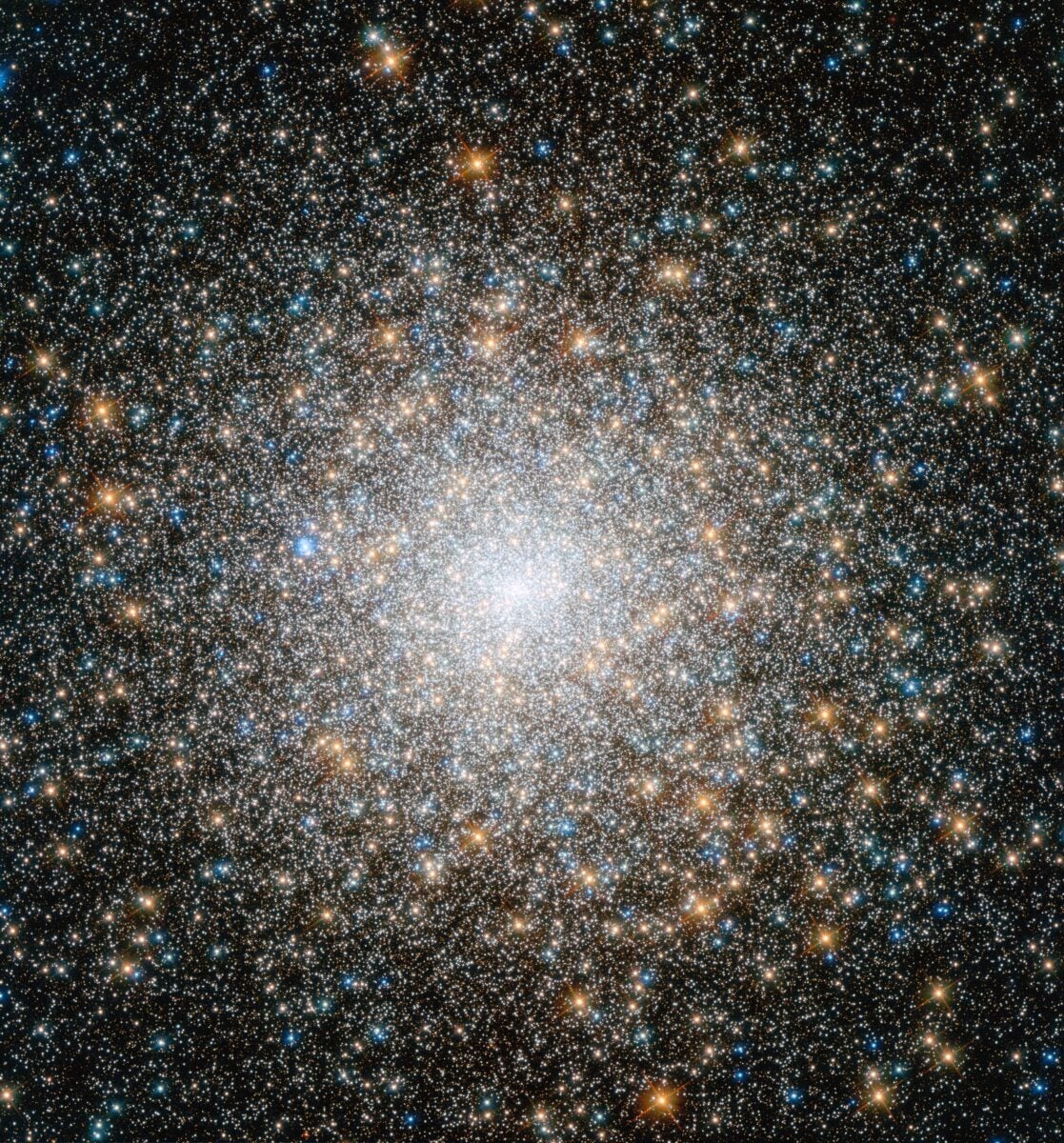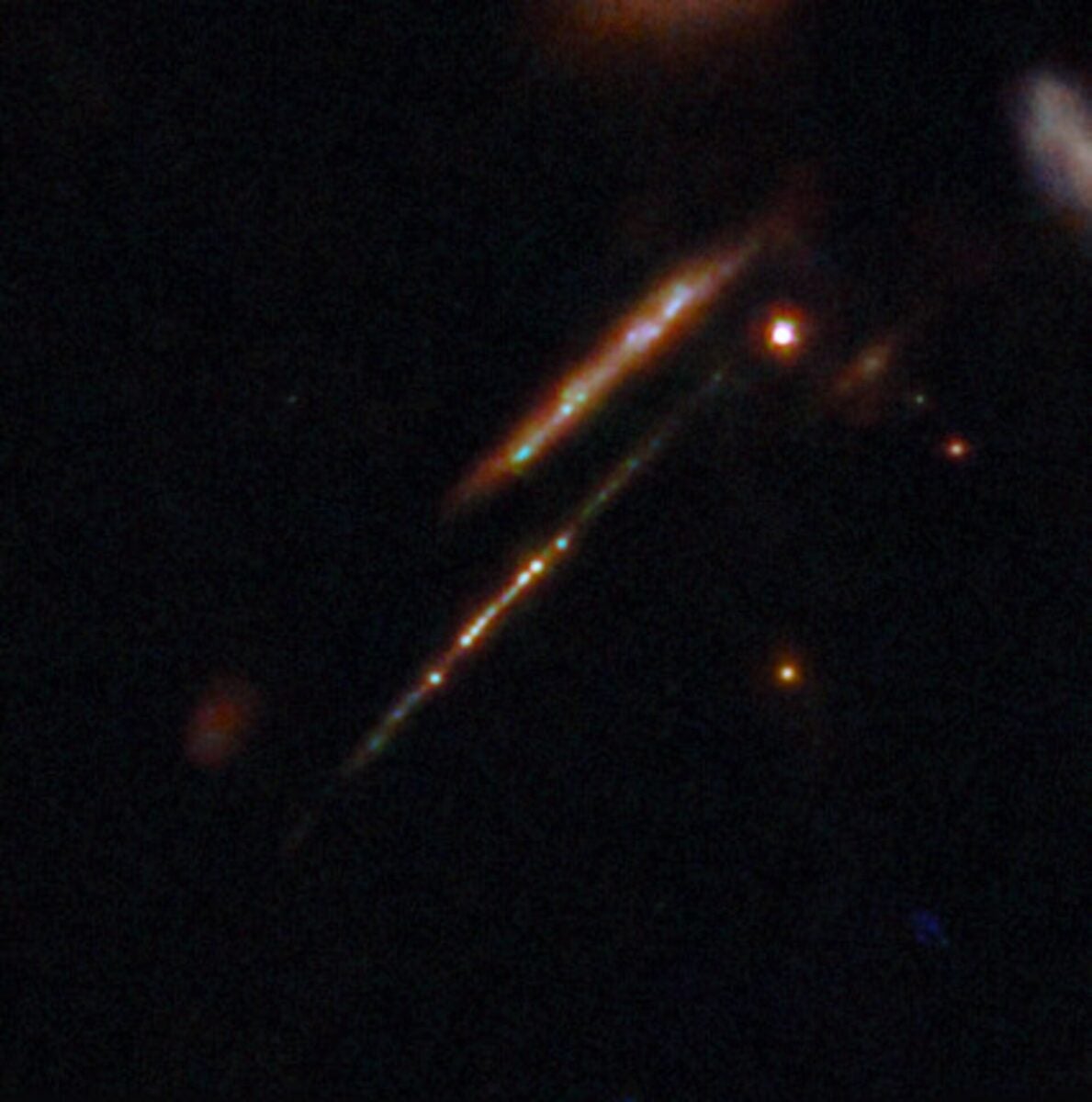The lineup of two celestial objects may help astronomers learn more about when the lights came on in the early universe.

This is a Hubble image of a globular cluster around our Milky Way. The authors of a new study think that what they see in the Cosmic Gems arc will become this object. Credit: NASA/ESA.
Several compact clusters of stars that formed near the Big Bang could provide a key insight into a little-understood time in the universe’s history. And we can only see them because of a quirk of astronomy.
A new study published in Nature details the findings of Cosmic Gems Arc, a galaxy that can only be seen through a process called strong lensing. This happens when a massive object lies in front of a more distant object from our point of view. The nearer object’s gravity acts like a lens and bends the fabric of space to reveal the more distant object.
Within Cosmic Gems Arc, astronomers were able to detect five objects in the process of becoming globular clusters, each of which is about 3¼ light-years across. These clusters could contain some of the first stars in the universe. They could also shed light on what astronomers call the Epoch of Reionization.
Long ago, the universe was filled with neutral hydrogen. This “cosmic fog” now makes viewing the early universe difficult. But at some point, something happened that caused these hydrogen atoms to shed or gain an electron, creating ionized hydrogen, and clearing the fog. That point is called the cosmic dawn, and it’s the closest we can come to seeing the Big Bang, the start of our universe. Objects like these globular clusters may have played a big role.
“We think these star clusters may have blown all the interstellar dust and gas out of the galaxy and enabled many photons to escape and reionize the intergalactic medium. But we need to actually find proof of it,” Angela Adamo, an astrophysicist at Stockholm University and lead author on the paper, says.

Because photons, which carry light, move at the speed of light, the universe is like a time machine. We see objects as they were however many light-years away they are. We are seeing the Cosmic Gems Arc as it was just 460 million years after the universe formed. Astronomers now peg the universe’s age at 13.7 billion years. Reionization began about 375 million years after the Big Bang, so we’re not going to discover objects much older than Cosmic Gems Arc. It probably ended around a billion years after the Big Bang, putting this galaxy somewhere in the era that reionization was underway.
Globular clusters are dense collections of stars bound by gravity. Often, the closeness of individual stars leads to more star formation because lots of gas is present. The clusters in Cosmic Gems Arc, while not yet true globulars, are small and compact, with plenty of material to form stars, but they may have a bumpy road ahead, Adamo says.
“They might become globular clusters but they need to survive for a long time and follow their host galaxy in its formation. The Cosmic Gems Arc will probably become part of a massive galaxy,” she says.
Their compact size places these stellar nurseries at distances shorter than that between Earth and the nearest star. Such proximity could lead to the formation of some quite unusual stars.
“Numerical simulations show us that at such stellar densities stars and black holes can merge in the core of the star clusters,” Adamo says. “This means that these star clusters might harbor very massive stars, unlike anything we see in the local universe and can lead to the formation of supermassive black holes.”

